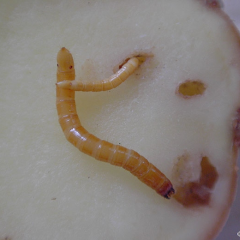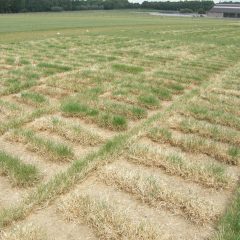Dossier Boxwood moth
By now everyone has heard of the boxwood moth. But where does this pest come from? Why is it a problem and can you do something about it? Research shows that control is perfectly possible, provided there is good pest control.
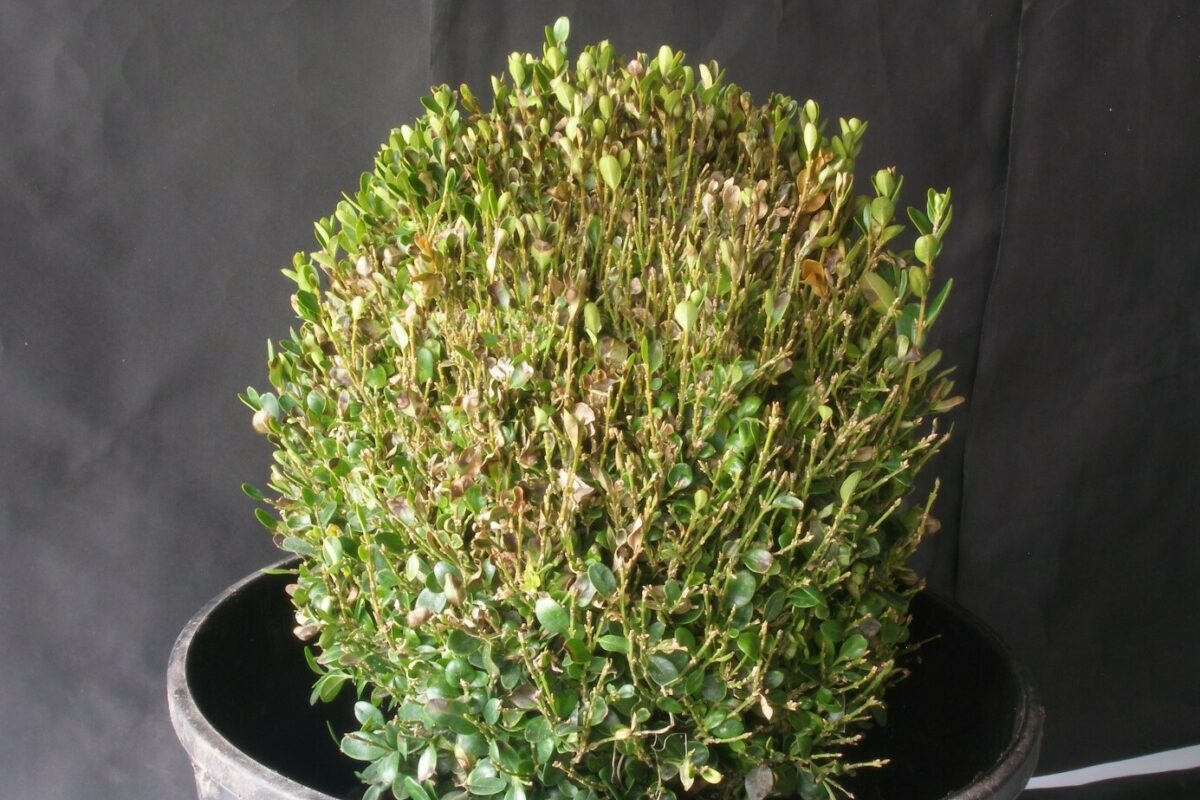
What does ILVO do?
-
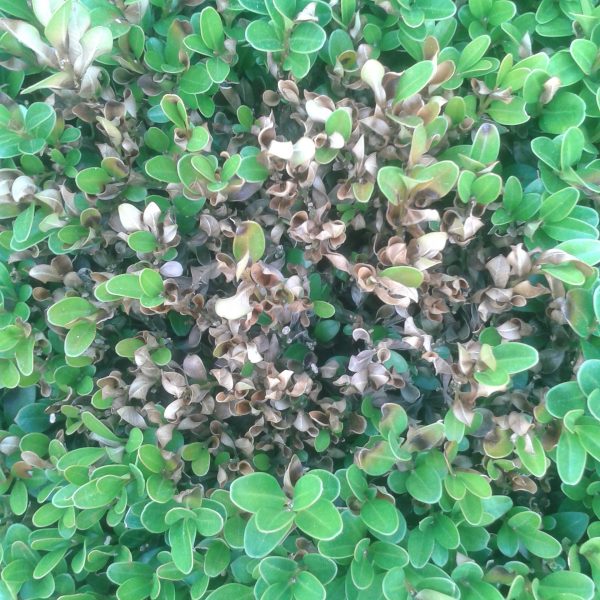 PCS Ornamental Plant Research is helping ILVO track the spread of the boxwood moth in Flanders.
PCS Ornamental Plant Research is helping ILVO track the spread of the boxwood moth in Flanders. -
 ILVO's Diagnostic Centre for Plants examines samples for the presence of the boxwood moth.
ILVO's Diagnostic Centre for Plants examines samples for the presence of the boxwood moth. -
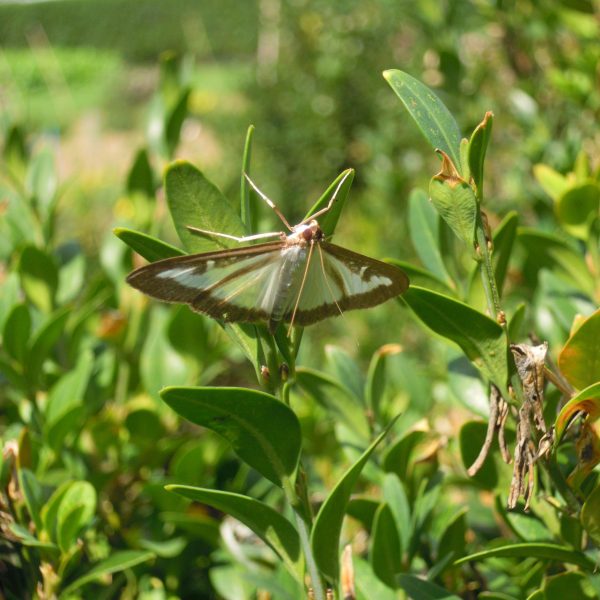 ILVO's Diagnostic Centre for Plants studies how the boxwood moth behaves, reproduces and develops into a plant pest.
ILVO's Diagnostic Centre for Plants studies how the boxwood moth behaves, reproduces and develops into a plant pest. -
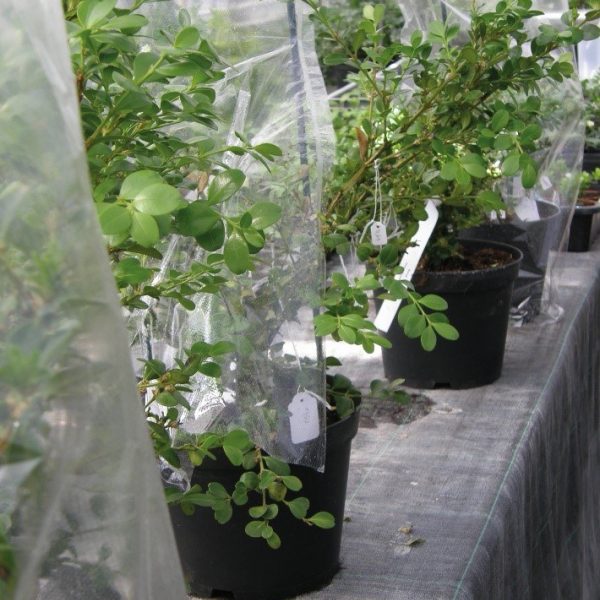 ILVO's Diagnostic Centre for Plants researches which management and control methods are most effective.
ILVO's Diagnostic Centre for Plants researches which management and control methods are most effective. -
 ILVO breeders develop new boxwood varieties that are potentially less susceptible to damage by the boxwood moth.
ILVO breeders develop new boxwood varieties that are potentially less susceptible to damage by the boxwood moth.
What is the boxwood moth and where does it come from?
By now everyone has heard of the boxwood moth (Cydalima perspectalis). This pest originated in East Asia that was accidentally introduced into Europe in 2006, more specifically in southwestern Germany. This most likely happened through wooden packaging material containing eggs or caterpillars. The boxwood moth reached our country in 2010 and in a short period of time has established itself almost all over the country.
Why is the boxwood moth a pest?
The butterfly itself is beautiful, but the caterpillar is voracious and can quickly eat an entire boxwood plant bald. Moreover, the population expands rapidly. This occurs mainly through the transport of affected boxwood plants, but but also via the air. The moth is a good flyer, so the populations can travel 7 to 10 km annually. This is a problem for both the ornamental plant and vegetable sector and for many private gardeners, because the box tree is one of our most important cultivated plants. As the boxwood moth is a new species in our region, the moth has few or no natural enemies. In addition, certainly in the initial phase, there was little knowledge about effective control and eradication of the pest.
Research and advice: SOS boxwood moth
On March 1, 2018, the research project "Sensitization around the monitoring and control of the boxwood moth (Cydalima perspectalis) in Flanders' (link to PURE), funded by the Flemish Fund for Agriculture and Fisheries of Department of Agriculture & Fisheries. ILVO and the Proefcentrum voor Sierteelt (PCS) followed during two years the life cycle of the boxwood moth and tested various control techniques. Landelijke Gilden and the floriculture and green space federation AVBS translated the acquired knowledge into practical tips for caregivers. acquired knowledge into practical tips for caregivers and garden owners at www.SOSbuxusmot.be (Dutch only).
Interested parties can also subscribe to a Dutch-language newsletter via that website, which indicates when and how you should intervene to prevent boxwood moth damage.
How do you recognize a boxwood moth?
As with all other butterflies, the life cycle of the boxwood moth consists of the following stages: egg, caterpillar and butterfly (moth). The timing of these phases is fairly well known. The weather, and especially the temperature, causes small variations. The boxwood moth flies mainly at night, but can sometimes be observed during the day. The wings are bright white in color with a brown edge. The body is also white with a brown head and brown abdomen. There is a rare variant that is completely brown. From tip to tip the moth is about 4 cm wide. Young caterpillars are dirty yellow in color and difficult to see. Older caterpillars have a black head and a bright green body with a pattern of black dots and black and light longitudinal stripes. They molt five to six times. A fully grown caterpillar is 4 cm long and hides inside the boxwood plant.
Photo description: Two adult boxwood moths lie with their wings open on a white background. One has brown wings and a brown body, the other has translucent wings with brown edges and a white body with brown head and tail.
Photo description: A close-up of the leaves of a boxwood plant with a cluster of eggs. The eggs are yellowish with a black dot in them. They are very small. © PCS
Photo description: A close-up of a boxwood leaf from the underside, with three young three young buxus caterpillars on it. Some feeding damage can already be seen on the leaves. The caterpillars are x cm big.
Photo description: A close-up of a branch with boxwood leaves. There is a fully grown Boxwood caterpillar with typical color pattern. The caterpillar is now almost as big as the leaves themselves, about the leaves themselves, about x cm.
When is the boxwood moth harmful?
Only the caterpillars of the boxwood moth can cause damage to boxwood plants. The tiny caterpillars that have just hatched are on the underside of the boxwood leaves. They scrape away the mesophyll there. From above it looks like the leaves are decorated with whimsical line patterns. Because the caterpillars are small, the damage is rather limited and not so noticeable. The damage becomes more noticeable as the caterpillars grow. They eat larger and larger bites from the leaf edge so that only the skeleton of the leaf remains. After a few days the whole twig of the boxwood is bare you will see bundles of dead leaves that have been spun together (spiderwebs). On the plant you will also find the gray-green droppings of the caterpillars as well as the remains of the moulted caterpillars and the pupae.
Large numbers of caterpillars can eat the entire plant bare. The boxwood temporarily loses its ornamental value, but does not die. With good care it can recover completely, even after heavy infestation. It is therefore not necessary pull out affected plants. In the summer new shoots appear after 6 to 8 weeks.
How can you avoid damage by the boxwood moth?
In 2020, ILVO and PCS have concluded that the pest pressure in most places in Flanders appears to be decreasing. The cause is obvious: there is less boxwood and thus less food for the caterpillar, and the plants that remain are well maintained and protected by their owners. Also in our neighbouring countries, the same trend towards smaller boxwood moth populations has been observed. Moreover, it is now clear that control is perfectly possible, provided that there is good pest control. The moths themselves are difficult to control, but intervening in the phase of the young caterpillars is very effective.
Control is possible according to this step-by-step plan
Step 1: Be alert for young caterpillars in April, July and September
In the months of April, July and September, inspect your plants for the presence of boxwood moth. Do this by examining the undersides of the leaves. The young caterpillars are difficult to see but leave a jagged line pattern on the leaves.
Step 2: Prune and compost trimmings
The best way to control the pest is, in addition to observing it, at least once in spring or autumn to prune the plants. In this way you remove your hot spots with overwintering caterpillars. It is important to remove the trimmings as soon as possible in a sealed bag and take it to the recycling park, where it will be properly composted (at a temperature above 60°C). Under no circumstances throw the pruning waste on your own compost heap, because from there the moth can easily spread again.
Step 3 (if necessary): biological control
In case of heavy infestation a treatment with biological insecticide may be necessary. Buy a spinosad-based product and get advice on correct use. Or call on a professional garden contractor, who has a wider range of (biological) pesticides available.
Step 4 (if necessary): chemical control
The use of chemical agents in the garden should always be the last option. That is no different for the control of the boxwood moth. However, it is important to know that the death of young tits is not caused by insecticides against the boxwood moth. This has been shown by research conducted in Belgium (Velt and Vogelbescherming Vlaanderen link?) and the Netherlands (CLM link?). The culprits turned out to be pesticides that are present in the fur of pets (anti-flea agent). Perhaps the tits were using the toxic hairs of cats and dogs to build their nests.
Step 5 (if necessary): choose a different boxwood variety
Plants that do not survive despite good care (e.g. due to repeated severe infestations), can be replaced with a less susceptible boxwood variety. After all, some species are not popular on the moth's menu, such as Buxus microphylla 'Rococo' and Buxus microphylla var. japonica.
Fully tolerant species of boxwood are not yet on the market, but this is being researched intensively.
Advice tailored to your region
Thanks to a regionally distributed network of citizen observers, the researchers can now monitor the distribution of the boxwood moth even better and in more detail. The observers will work voluntarily on a weekly basis in their boxwood plants for the boxwood moth and its caterpillars, and report their findings to the report their findings to the SOSbuxusmot team. This allows SOSbuxusmot, through its newsletter, to provide advice on the right control time tailored to each region. That regional aspect is very important, since small variations in temperature already have an impact on the activity of the boxwood moth.
You can subscribe to the Dutch-language newsletter at www.SOSbuxusmot.be.
Will the boxwood moth ever completely disappear?
The boxwood moth will probably never completely disappear. But control is possible by following the above steps. Bare bushes are a thing of the past!
Contact an expert

Research projects

